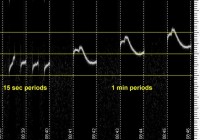WSJT-X FST4 mode – First impressions
Having read about WSJT-X version 2.3.0 with the new FST4 protocols, curiosity drove me to perform some tests. In the past, I wrote about FT8 and the fact that its sensitivity is considerably less than JT65 or JT9, leading to lost DX opportunities. Especially on 60 metres, the restricted power levels pose an additional challenge… Continue reading »







